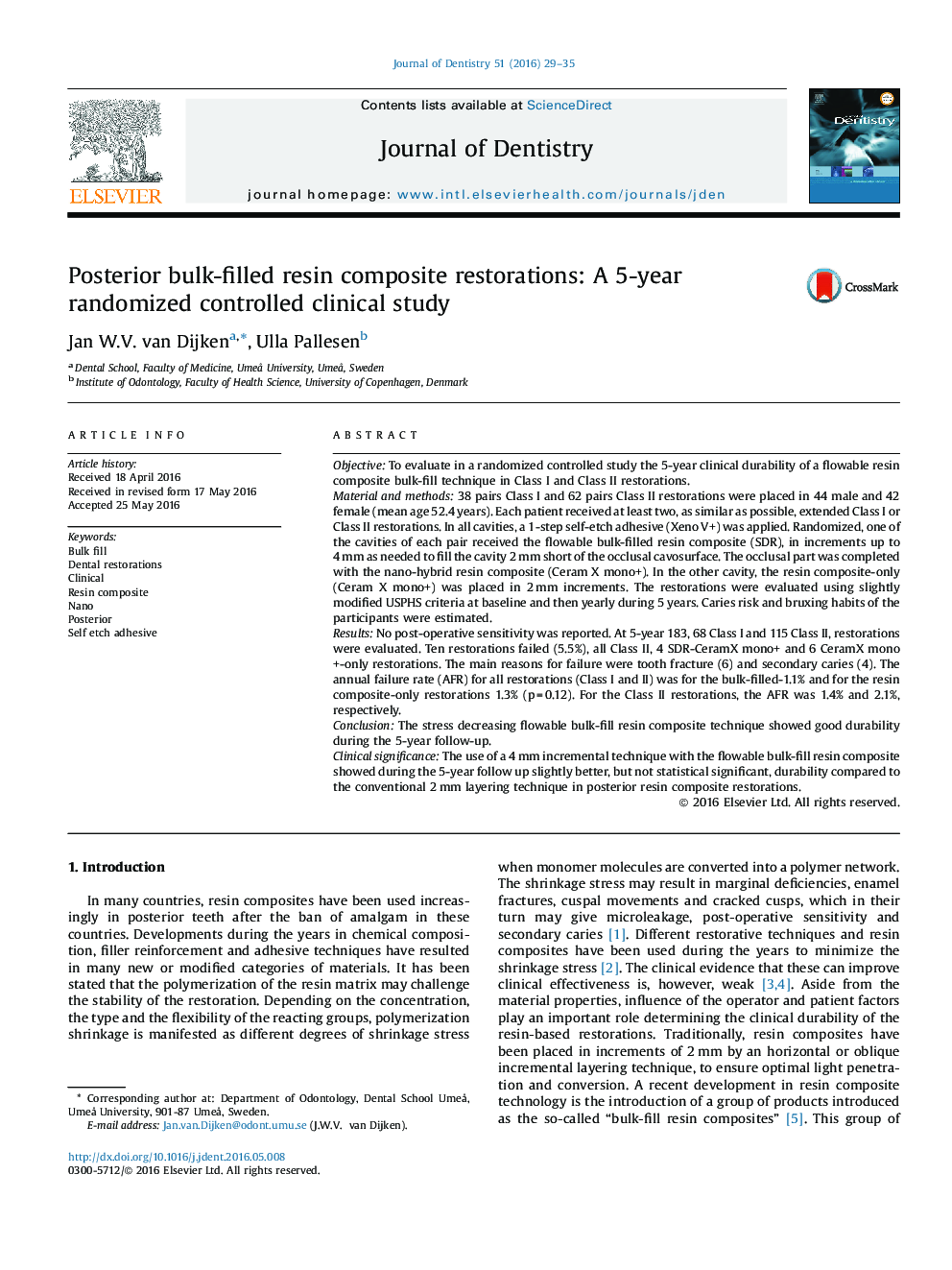| کد مقاله | کد نشریه | سال انتشار | مقاله انگلیسی | نسخه تمام متن |
|---|---|---|---|---|
| 6053233 | 1585478 | 2016 | 7 صفحه PDF | دانلود رایگان |
ObjectiveTo evaluate in a randomized controlled study the 5-year clinical durability of a flowable resin composite bulk-fill technique in Class I and Class II restorations.Material and methods38 pairs Class I and 62 pairs Class II restorations were placed in 44 male and 42 female (mean age 52.4 years). Each patient received at least two, as similar as possible, extended Class I or Class II restorations. In all cavities, a 1-step self-etch adhesive (Xeno V+) was applied. Randomized, one of the cavities of each pair received the flowable bulk-filled resin composite (SDR), in increments up to 4 mm as needed to fill the cavity 2 mm short of the occlusal cavosurface. The occlusal part was completed with the nano-hybrid resin composite (Ceram X mono+). In the other cavity, the resin composite-only (Ceram X mono+) was placed in 2 mm increments. The restorations were evaluated using slightly modified USPHS criteria at baseline and then yearly during 5 years. Caries risk and bruxing habits of the participants were estimated.ResultsNo post-operative sensitivity was reported. At 5-year 183, 68 Class I and 115 Class II, restorations were evaluated. Ten restorations failed (5.5%), all Class II, 4 SDR-CeramX mono+ and 6 CeramX mono+-only restorations. The main reasons for failure were tooth fracture (6) and secondary caries (4). The annual failure rate (AFR) for all restorations (Class I and II) was for the bulk-filled-1.1% and for the resin composite-only restorations 1.3% (p = 0.12). For the Class II restorations, the AFR was 1.4% and 2.1%, respectively.ConclusionThe stress decreasing flowable bulk-fill resin composite technique showed good durability during the 5-year follow-up.Clinical significanceThe use of a 4 mm incremental technique with the flowable bulk-fill resin composite showed during the 5-year follow up slightly better, but not statistical significant, durability compared to the conventional 2 mm layering technique in posterior resin composite restorations.
Journal: Journal of Dentistry - Volume 51, August 2016, Pages 29-35
